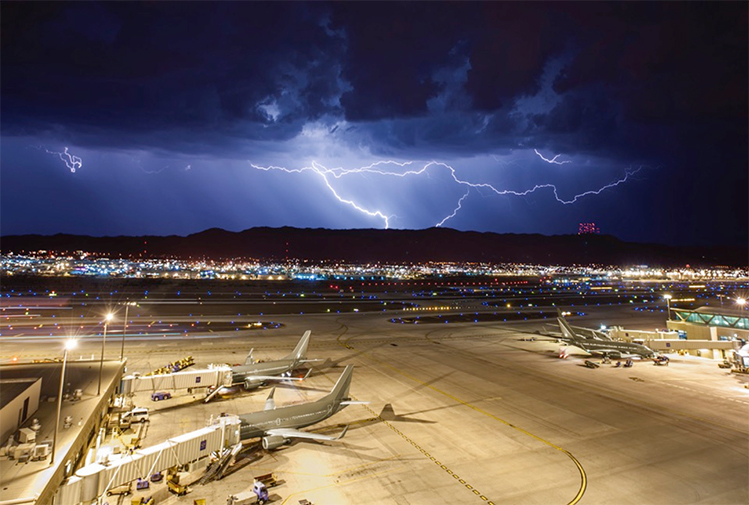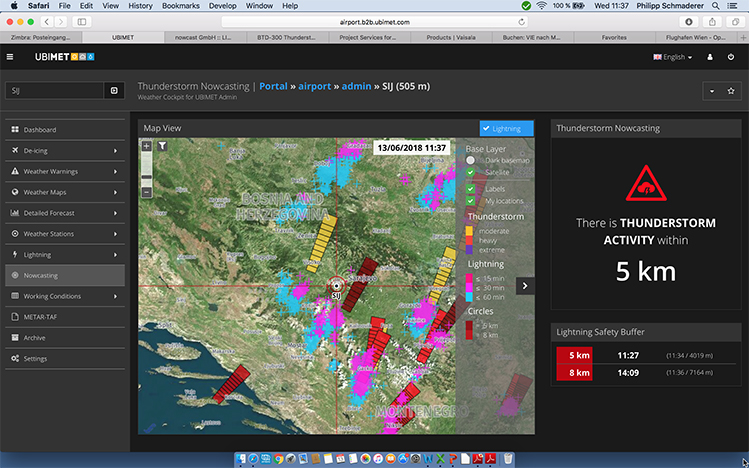By Stefan Eisenbach, Senior Director Business Development, UBIMET (Institute for Ubiquitous Meteorology).
Lightning is a hazardous and occasionally fatal threat to anyone outdoors in the vicinity of lightning activity. This is a major concern for the aviation industry, especially ground handling personnel on the apron area. For safety reasons personnel are directed indoors any time lightning is detected within a critical distance, often 5nm (9km). The interruption to outdoor activities performed by apron area will remain until the lightning threat has passed, halting all departure and arrival operations for the whole duration of a thunderstorm.

Stefan Eisenbach, Senior Director Business Development, UBIMET (Institute for Ubiquitous Meteorology).
The challenge for aviation operators is to find the optimum balance between personnel safety and operational efficiency. An overly cautious protocol will unnecessarily increase operational inefficiency, delay flights and cause avoidable knock-on impact on airline/airport/handlers schedules. A lax view on lightning may result in injuries, death and damage to hardware.
Almost all airports in the world are impacted by thunderstorm activity, and thus require a thunderstorm safety procedure. Tropical airports experience thunderstorms throughout the year, whilst airports at higher/lower latitudes experience short and intense thunderstorm seasons.
The suspension and resumption procedures vary from airport to airport and depend on several factors such as lightning detection method and technology, availability of meteorologists, risk parameters and chosen safety buffers.

Stoppages can be reduced and safety enhanced by resorting to highly precise weather and lightning data. By combining them in secure data platform and meticulously defining procedures airport operation can be made both safer and more efficient.
The resulting solutions have been varied and often include a number of the following constraints:
- Ground handling stops based on meteorologist observations are often very conservative and especially re-opening decisions are delayed.
- Ground handling stops based on operation personnel observations are accompanied by high inaccuracy and error rate. Installed lightning detection systems are based on outdated technology or are inaccurate, resulting in high error rate and therefore require extended safety time buffers.
- No, or just inaccurate, information available on estimated occurrence of thunderstorms, duration and end. Lightning events are processed and communicated manually.
- Lightning alarms do not follow a fast and reliable distribution routine.
- Approaches including these faults are by no means satisfactory and can be optimised to safely reduce the impact of a thunderstorm and to maximise capacity. Moreover, nearly all standard approaches do not consider is the possibility of a thunderstorm or the 1st lightning flash developing directly above the airport apron area.
Stoppages can be reduced and safety enhanced by resorting to highly precise weather and lightning data. By combining them in secure data platform and meticulously defining procedures airport operation can be made both safer and more efficient.

Lightning is a hazardous and occasionally fatal threat to anyone outdoors in the vicinity of lightning activity. This is a major concern for the aviation industry, especially ground handling personnel on the apron area. For safety reasons personnel are directed indoors any time lightning is detected within a critical distance, often 5nm (9km).







